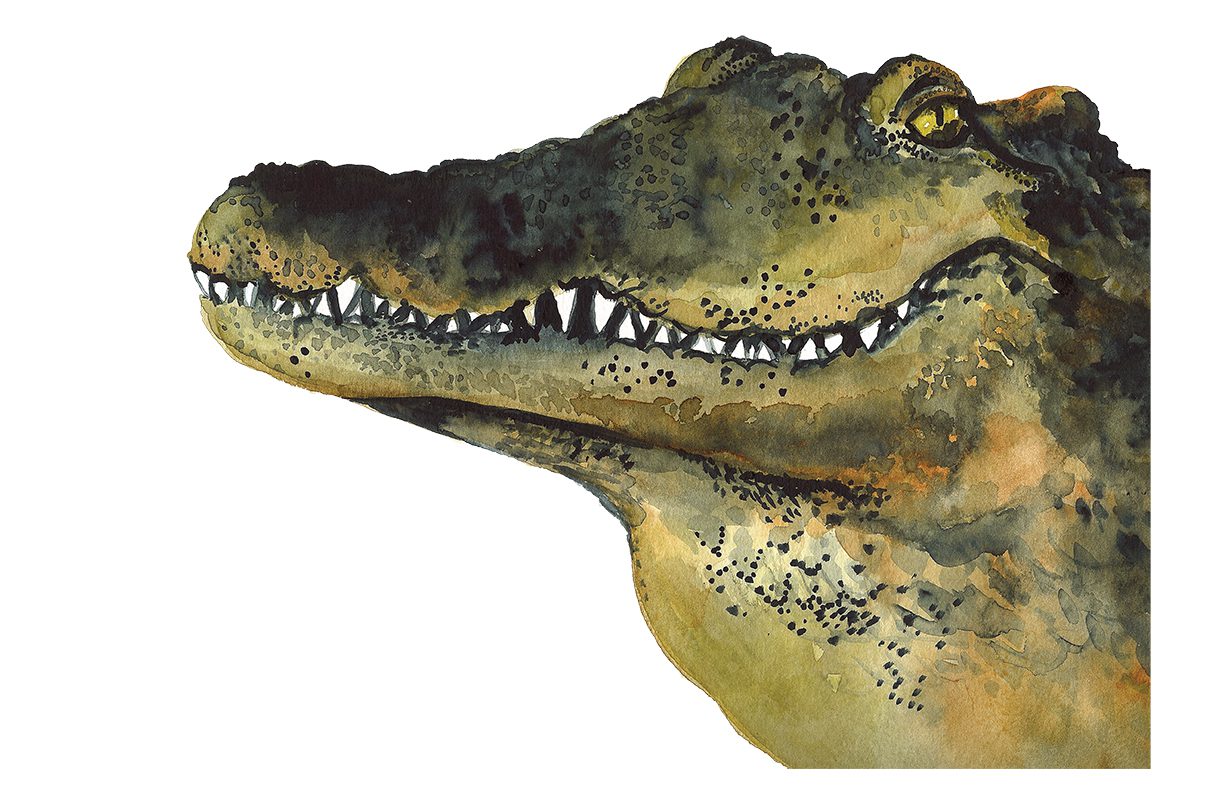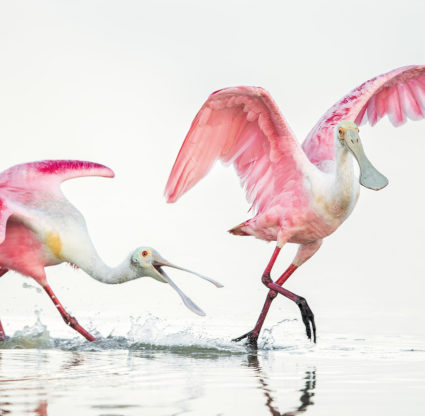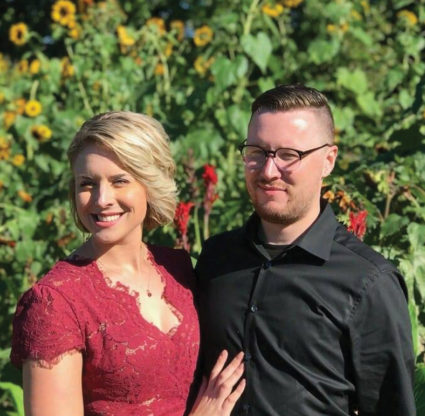This tale is one of full-throated anthropomorphic projection, one that bucks the basic ground rules of nature and mortality. Grant us a heaping suspension of disbelief as we introduce our guide for this story, a crocodile named Big Joe. He’s a legend at the Everglades Wonder Gardens, his home.
The roadside attraction nestled into a den of green on the Imperial River in Bonita Springs is a throwback to a time when tourists motored through the Everglades in early model Fords. These days, the 3.5-acre spot is more botanical gardens than tourist trap, though pink flamingos, alligators, turtles, rescued birds and more remain. In 2015, the founding family, the Pipers, sold it to the Bonita Wonder Gardens, a nonprofit created to save the park from commercial development.
Big Joe is the park’s elder statesman. He’s been at the Wonder Gardens in various incarnations since the 1930s or so. At 15.5 feet, he was said to be the largest living crocodile in captivity. (The current titleholder is an Australian monster stretching 17 feet.) Big Joe now exists in an inert state of taxidermy in the Gardens gift shop off Old 41. But history speaks and that croc has quite a tale. Wonder is fertile terrain of the imagination. That said, from the jaws of Big Joe….
 |
|
Big Joe rests in his current state on-site in Lester's Lab gift shop. |
When I first came here, there was just a dribble of folks by today’s standards. A few here, a few there, but we need to go back further to get to the start. The Wonder Gardens began with two real adventurous types, bootlegging brothers from Michigan, Bill and Lester Piper. They ran whiskey along the Detroit River. In that line of work, you become a person who’s not scared. I imagine they were making quite a sum, but it was hard goin’. Bill got shot. Guess a wild swamp didn’t look so bad. In the ’30s, Bill, Lester and their wives drifted down here to Bonita, a speck of a town then where the fishing was good. Let’s start a reptile farm, they decided, thinkin’ that would give them all the time in the world to hunt and fish. ’Fore you know it, they’re not huntin’, they’re collecting. Gators. Wildcats. Turtles. Snakes. Panthers.
What on God’s green earth made these fellas from up north think they could round up wild beasts and lock them up for tourists to see? Guts, I’d say. Once Lester tried to bust up a tussle with two bull crocodiles. He fell into the pen. A lesser man would be dead. Lester broke some ribs.
From what I heard, this piece of ground was just woods, palmettos and big pine trees. Lester and Bill cleared much of the brush with machetes so they could build the Everglades Reptile Gardens. The road was unpaved then. They charged 25 cents, but tourists didn’t take to the word “reptiles.” It made ’em squeamish. That’s how we got to be the Wonder Gardens.
Word spread the Piper brothers paid for animals. This one fella in particular became their man for crocodiles. Folks say he sold the Pipers ’round near 300 crocodiles between 1936 and 1945, give or take. This man was a rough character. He’d rob crocodile nests and peddle them as baby gators to tourists. He shipped crocs to major zoos, collectors. We couldn’t hold our own against this guy and others. In the ’70s, the American crocodile was listed as endangered. This sticks worldwide, but we’ve been down-listed to threatened here in Florida in the past decade. Say, I’ve even heard rumblings about crocodiles showing up in Bonita Bay. For sure we’ve been seen in Ding Darling over there on Sanibel.
Anyhow, I, Big Joe, was caught off Key Largo and came to the gardens in the ’30s or ’40s. Who knows when for certain. The Pipers weren’t ones for paperwork. Neither am I one for dates. If we pause for a dose of reality, I’m as dumb as a doornail. I live by instincts. My brain is the size of a golf ball. At best. To be honest, what’s really pumping through me is something like, Hunt. Hunt. Hunt.
But that wouldn’t make for much of a story.
Back in the ’50s, we crocodiles ruled the gardens. The Pipers were said to have the largest crocodile collection in Florida. If I’m bein’ honest, a bear named Tom, known as Old Slewfoot, was a bigger draw. He was in a 1946 film, The Yearling, which was nominated for a mess of Oscars, even won some. That bear, he loved Pepsi. I remember when Bill tried to snag the bottle back before Old Slewfoot was done. Bill wound up with 27 stitches. This one alligator, Old Man Mose, he was popular, too. You’re testing the memory now, but a road sign about him said somethin’ like this:
"Old Man Mose, he sure is a buster. He ate five dogs and a feather duster. From end to end he’s 12 feet in length, and we all agree he don’t know his strength."
The old days, those were wild times. Boy did I have a bite. Got to fightin’ with the other crocs so much the Pipers locked me in solitary for good. Knocked my own dang teeth out. Now, crocodiles, we can regrow teeth, but I reached my limit. You didn’t ask, but I’ll tell ya. Teeth are one way you can tell us apart from gators. Two of our lower teeth jut out when our mouth shuts. The snout is another. Ours are pointier than gators’. You’re more likely to find us in brackish water, but we keep to ourselves.
 In the gardens, I didn’t do a whole heck of a lot. A lot of people, tourists at least, took me for dead. Once, though, I gave them quite a show when I jumped ’bout 5 feet up to kill a vulture just ’cause I could. When I was younger and there were a lot of us, we raised quite a racket in the park during mating season. Once the other crocs would get to roarin’, these deep, long sort of growls, I’d throw myself up and look straight at those tourists. Scared the bejesus out of ’em. That was about it for performing.
In the gardens, I didn’t do a whole heck of a lot. A lot of people, tourists at least, took me for dead. Once, though, I gave them quite a show when I jumped ’bout 5 feet up to kill a vulture just ’cause I could. When I was younger and there were a lot of us, we raised quite a racket in the park during mating season. Once the other crocs would get to roarin’, these deep, long sort of growls, I’d throw myself up and look straight at those tourists. Scared the bejesus out of ’em. That was about it for performing.
If you were lucky, you might see me eat. In the old days, people would bring by dying horses to the Pipers to shoot and butcher for us in the slaughterhouse on the land. That big shed is there still, but they don’t use it like that no more, least I don’t think. Later on, I’d get near 50 pounds of fish, chicken or beef once a week. It takes a spell for me to digest. Sure, some people might have thought, “Big Joe knows my voice.” Hell no. I’d rather eat ’em than be friends. People don’t suit me. Lester and me, we had that in common. He was the closest I came to a friend. Those who didn’t know him might take him as mean. He’d get testy with the tourists. He preferred us. Well somewhere round ’81, Lester took over from Bill. Lester worked 12-hour days into his 80s. He was known to say, “The world’s not your oyster.” I liked that old guy. “How ya doin’, Joe?” Lester would greet me like a dog. He died back in 1992. (Made such an impression on his workers that, or so I hear, some still toast to his memory at his grave every year—seeing as I can’t make it over there, the human who helped me write this will tell you more about it.) His heirs ran the place.
My legend lived even after the heyday of the gardens. Roadside America came and went. Disney drained us. Over the years, I did a little of this and a little of that. At one point, a radio station sponsored me. I was the 96 K-ROCKodile. The Gardens food stand was named for me: Big Joe’s Sweets and Treats. When the first Big Joe died, another appeared. I was like the Shamu of Bonita. If you don’t have a star, you lose some luster. Who knows how many of us there were. Was I the first Big Joe or the last? If I were the last, I died in 2003 and there’s a chance I’m a Nile crocodile. The Gardens people found me—1,200 pounds of beast—floating in the water. It took several men and come-alongs to drag me out. Cancer took me in the end. Off went my hide and head to the taxidermist. In my current incarnation, I have teeth.
Now I’m a mascot of sorts in a room of peculiarities named for my old pal. Lester’s Lab off the gift shop holds other dearly departed garden companions alongside glass jars of alligator eggs, turtles and who knows what floating inside. Everglades kitsch at its finest. Outside is real pretty—not that I can see, but I hear it’s a botanical jungle of bromeliads, orchids, native and exotic plants and trees. (I’ll let that human tell you more about what’s happening here these days.) They’re spiffin’ things up and could use a few green thumbs to help. There’s loads of gators still. A hanging bridge swings over their pits. Kids love it. Makes no sense to me. Gators schmators. Crocodiles, we’ll have our day. The American crocodile is on its way back in Florida. Climate change and such. We like the warmer water. We may number ’bout a few thousand now. Some say we’re heading north. Marco. Imperial River. Estero Bay. Cape Coral. But not to worry much if you see us. We’re not inclined to approach. We’re mighty, but we’re mighty shy in the wild. But an old croc can’t tell you everything about the Wonder Gardens. I’m due for some quiet. It’s time for me to step aside, manner of speaking of course ’cause I’m dead, so others can weigh in.
Sources used for this story: Everglades Wildlife Barons: The Legendary Piper Brothers and Their Wonder Gardens by Charles LeBuff; That’s the Way It Was (1982 documentary); and Images of America: Bonita Springs by Chris Wadsworth, Allison Fortuna and the Bonita Springs Historical Society. Additional information came from interviews with LeBuff, also author of Florida’s Crocodile: Biology and History of a Threatened Species, Jason Miller, David Piper, Frank Liles and Trish Leonard.





